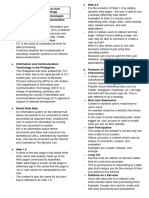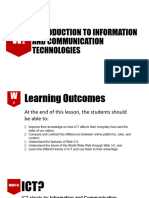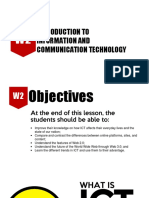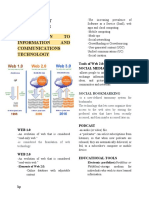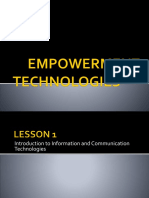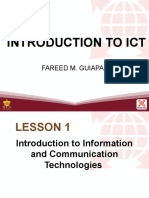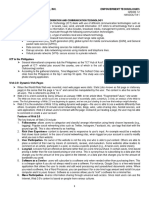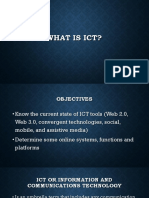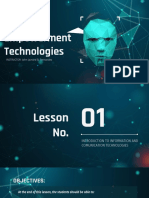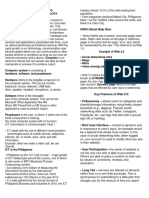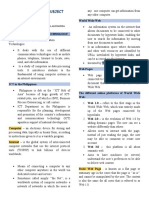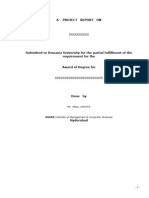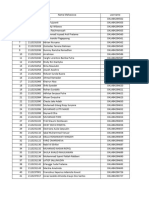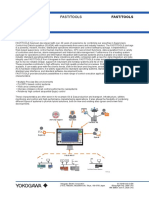0% found this document useful (0 votes)
19 views22 pagesWhat Is Information and Communication Technology?: (ICT) Is Defined As "Diverse Set of Technological Tools and Resources
Uploaded by
eralino.lychiel06Copyright
© © All Rights Reserved
We take content rights seriously. If you suspect this is your content, claim it here.
Available Formats
Download as PDF, TXT or read online on Scribd
0% found this document useful (0 votes)
19 views22 pagesWhat Is Information and Communication Technology?: (ICT) Is Defined As "Diverse Set of Technological Tools and Resources
Uploaded by
eralino.lychiel06Copyright
© © All Rights Reserved
We take content rights seriously. If you suspect this is your content, claim it here.
Available Formats
Download as PDF, TXT or read online on Scribd
/ 22

